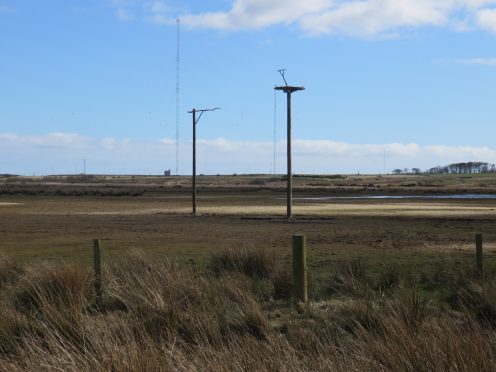A new one-bed home has been put on the market at a remote north-east wildlife reserve.
But property owners the RSPB are only willing to listen to offers from very exclusive prospective tenants – pairs of mating ospreys.
The animal protection charity unveiled the new nest platform at Loch of Strahbeg near Crimond yesterday and the reserve team is hoping new homeowners can be found quickly.
Reserve warden Lorna Dow said: “We see two or three ospreys using the loch very regularly to fish, but they have limited local nest sites available.
“We wanted to give them a safe, secure place to nest on an ongoing basis. We are very grateful to Scottish Hydro Electric Power Distribution (SHEPD) who both supplied the telegraph pole and put up the platform free of charge.”
She added that the reserve team have already fixed branches in place on the platform to give potential tenants a “headstart”.
“An osprey has been spotted at the reserve already this spring, so we now just have to wait and see if they like this new home we have built for them.”
And last night SHEPD team manager Graeme Gill said he and his colleagues are excited to see if the “majestic” birds of prey will nest in the area.
He added: “When the RSPB Scotland team at Loch of Strathbeg approached us, it quickly became clear that we had the equipment and the skills to help out.
“Our sturdy wood poles play a vital role in keeping the lights on for north-east communities, but they also make a nice secure base for a nesting platform that’s well out of harm’s way.”
Ospreys are fish-eating birds of prey which can grew to a wingspan of nearly six feet. They spend winters in Africa before returning to the UK in late March or early April to breed.
Considered a “true conservation success story”, ospreys were extinct as a breeding species in Scotland by 1916 as a result of damage done by Victorian egg collectors.
But in the 1950s ospreys naturally returned to Scotland, initially in the Loch Garten area. Now there are approximately 250 breeding pairs nesting in the country.
